This year’s Super Bowl opponents are about as evenly matched as can be. The Kansas City Chiefs and Philadelphia Eagles have so many strengths and so few weaknesses. As with many Super Bowls, the result could come down to a single theme or just a handful of plays.
With such little margin for error on either side, we’ll take a quick look at a schematic aspect for each offense that could make the difference in the game.
Kansas City Chiefs
Patrick Mahomes and the Chiefs have the unenviable task of facing the Eagles' ferocious defense. Philadelphia leads the NFL in sacks this season, and they prevent explosive plays at an elite rate.
Beyond acquiring premium talents in the offseason, including cornerback James Bradberry and safety C.J. Gardner-Johnson, what has made the Eagles so successful in coverage this year? A quick breakdown uncovers what has worked on the backend.
| Coverage | Team Pass Rush Grade (rank) | Team Coverage Grade (rank) |
| Cover 4 (Quarters) | 81.0 (1st) | 90.2 (1st) |
| All other coverages | 89.3 (1st) | 72.2 (14th) |
Regardless of the action happening behind them, the Eagles' pass rush is the best in football. However, Philadelphia has found the most success as a unit when deploying Quarters (four deep) coverage.
The strength of their four-man rush allows them to drop seven in coverage and prevent explosive plays. Knowing this, the Eagles leaned more into it as the year wore on. They lead the league this year with eight interceptions in Quarters, double the total of the next closest team.

The cornerbacks can essentially play man-to-man on anything vertical outside the numbers while the safeties are free to jump deep crossers and routes up the seam, as safety Reed Blankenship does above.
So, what does this have to do with Mahomes? Quarters coverage has, at times, been his kryptonite. His 2021 results against it bear that out.
Mahomes' passing grade against Quarters in 2021 was just 60.8, the fourth-worst mark in the NFL among 34 quarterbacks who faced it at least 30 times.
His 2022 results tell a different story. This season, Mahomes carries an 80.3 passing grade against Quarters, fifth best in the NFL. The departure of speedster Tyreek Hill led to an adjustment period with the offense being less vertically oriented. The first five weeks of 2021 looked a lot like last season. But since Week 6, Mahomes carries an 84.9 passing grade against Quarters, second best in the NFL.
The adjustment has been taking what the defense gives. Chiefs head coach Andy Reid has done a nice job of isolating curl/flat defenders so that Mahomes simply can’t be wrong.

Highlighted is the curl/flat defender. Tight end Travis Kelce sits down on a hitch while wide receiver JuJu Smith-Schuster sneaks behind with the in-route. The defender’s initial lean is to Kelce’s outside shoulder, and Mahomes throws behind him.
Another variation:
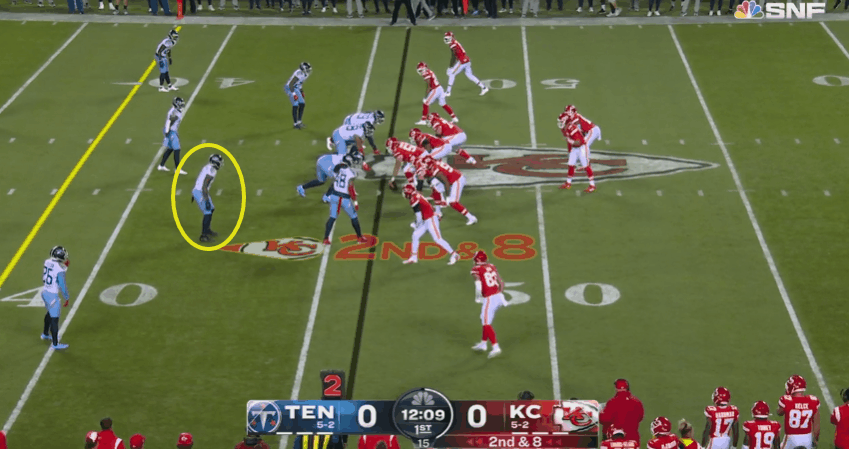
This creates several problems for a defense. The motion produces a stack from the receivers, which makes it difficult for zone defenders to read releases and match up. Tight end Noah Gray runs a speed-out to draw the curl/flat to him, despite his inside leverage. The same principle applies. The curl/flat man can’t be correct.
This time, we’ll see the read man sit back:

Notice the slight false step toward Kelce on the dig. That’s enough indecision to create a big play when the ball is thrown on time. It should be noted that all of these plays occurred on the weak side of the offense. When facing a nickel defense — the most common in the league now — the weakside read will often be a linebacker, an easier matchup than a slot cornerback.
What happens when a defense covers this sort of concept correctly? Against Mahomes, more bad news:

The weakside defenders do everything right here. The curl/flat sits down on Kelce. Just off-screen, the safety drives down on the in-route. Mahomes has too much time, though. He’s able to work back to Marquez Valdes-Scantling on the go-route. We mentioned earlier that the outside cornerbacks match on anything vertical outside the numbers. Valdes-Scantling went that route and won decisively.
Mahomes has mastered concepts designed to isolate weaker defenders and find space against a defense that has given him problems in the past. A year ago, Mahomes against the Eagles' Quarters coverage may have been a mismatch. If he continues to master the nuance of beating it, Philadelphia's coverage unit could be in for a long night.
Philadelphia Eagles
This is going to sound odd, but the Eagles’ offense is not built around Jalen Hurts or A.J Brown or Miles Sanders — or any skill player. The Eagles’ offense is built around all-world center Jason Kelce. Most of the best stretches of offense this year are built and layered around Kelce’s talent and versatility.
For starters, Philadelphia is, by far, the best team in football running to either side of their center.
Eagles Running Behind Jason Kelce
| Point of Attack | Overall grade | Run Grade | Run-Blocking Grade |
| Middle Left/Middle Right | 91.4 | 81.5 | 88.4 |
All of the above grades rank first in the NFL. The run-block grade is the best by a huge margin. The style in which the Eagles do it is also unique to them.
Eagles Running Inside Zone
| Run Concept | Overall Grade | Run Grade | Run-Blocking Grade |
| Inside Zone | 83.0 | 69.6 | 86.0 |
The overall and run-blocking grades here top the NFL, while the run grade is 10th best. If we combine the two scenarios above, the results are staggering.
Eagles Running Inside Zone Behind Jason Kelce
| Overall Grade | Run Grade | Run-Blocking Grade |
| 94.0 | 77.2 | 91.9 |
Once again, the overall and run-blocking grades rank first in the league by a long shot. The run grade ranks second in the NFL behind Arizona.
The inside-zone run game is the foundation of Philadelphia’s offense. Including playoffs, they have run 69 more inside-zone plays than any other team in the league. Kelce is the biggest reason for this habit. When run properly, inside zone is the football equivalent to a first-pitch fastball for a strike.

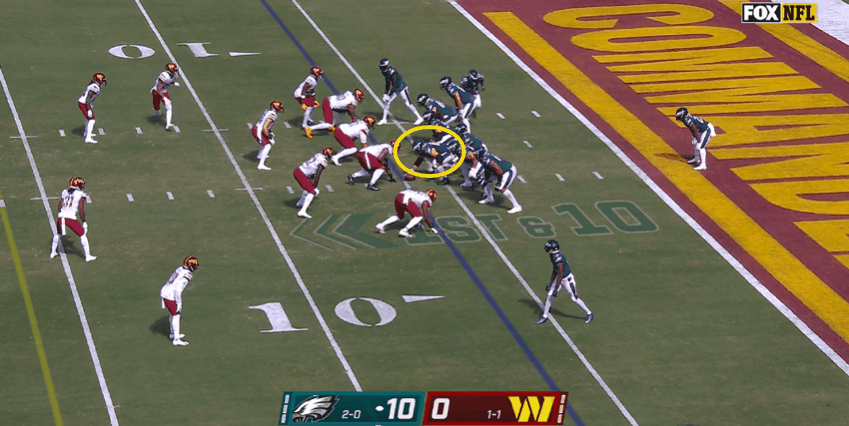
There are two things to highlight here. The first is Kelce’s ability to get physical in the trenches and open holes against defensive tackles. The second is his ability to move to the second level and maul linebackers to create lanes downfield.
The Eagles have to be able to create positive plays like the ones above. They should be able to do so against the Chiefs. Chris Jones is a monster inside, but he is also Kansas City’s only defensive tackle with a 60.0-plus run-defense grade.
When defensive tackles struggle, linebackers have to step down harder to help. Subsequently, space is created for big plays elsewhere.
Those big plays could occur on RPOs:
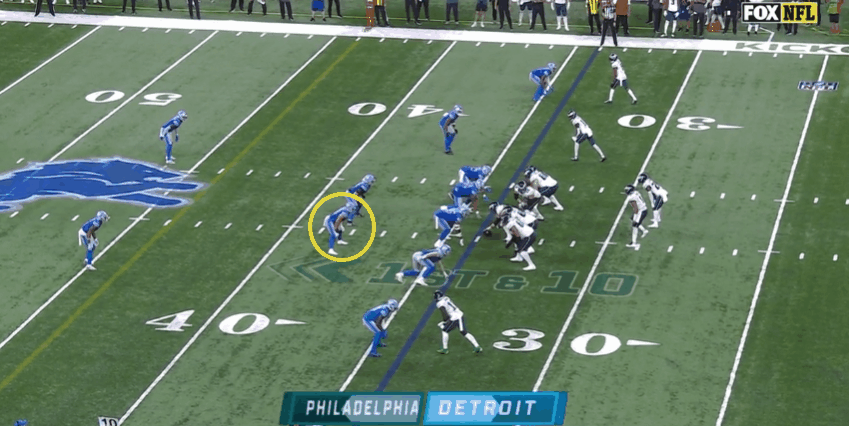
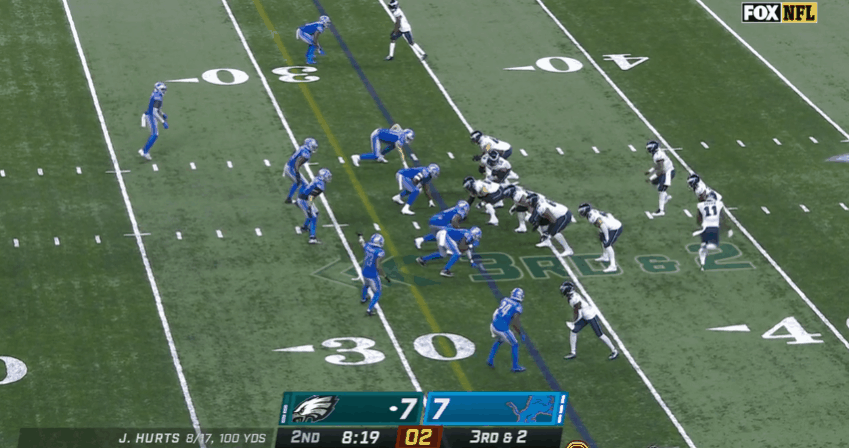
Or straight play action:

This last one is particularly interesting because it’s a concept and route that Brown excelled with in Tennessee. These types of plays and sequences keep the Eagles' offense moving instead of dropping back and throwing vertically down the field.
Philadelphia’s success starts with Jason Kelce, the anchor of the best offensive line in football. They’ve built an offense centered on his power and versatility, layering many concepts — including the simple ones shown above. A center would likely never win a Super Bowl MVP. If the Eagles win on Sunday, though, there is a good chance that Kelce will have been the best player on the field.
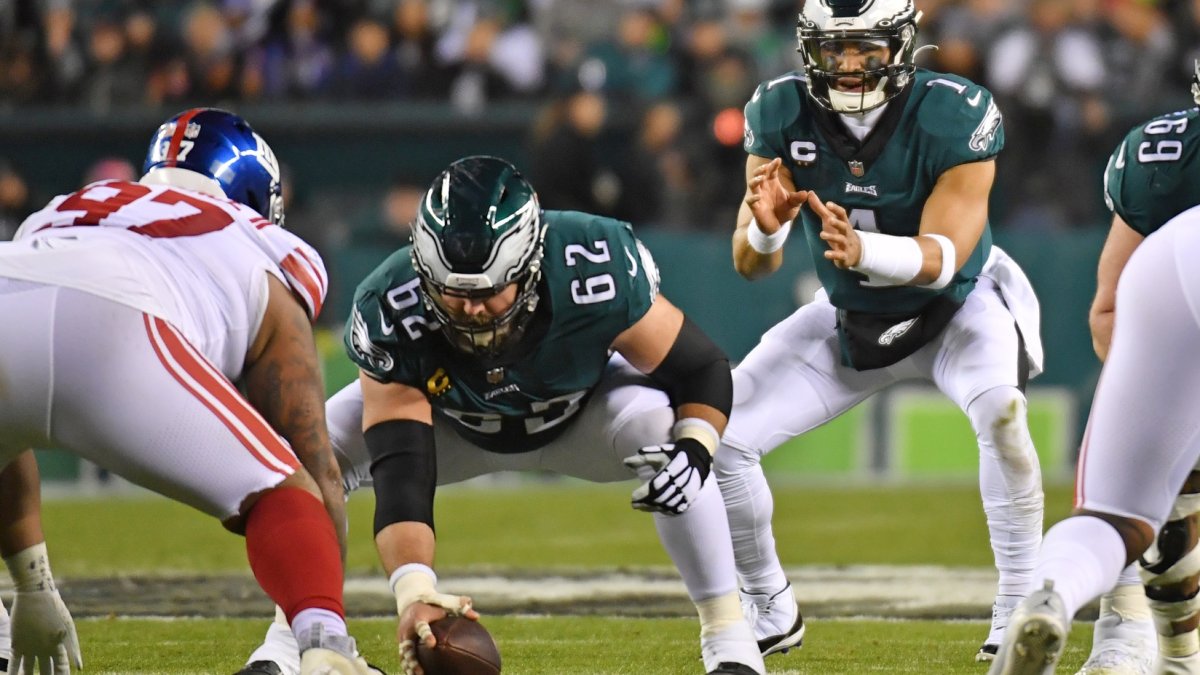



 © 2025 PFF - all rights reserved.
© 2025 PFF - all rights reserved.